Note: This website was automatically translated, so some terms or nuances may not be completely accurate.
Read in 10 minutes An Introduction to Global Advertising Awards
Why do advertising awards hold value? Why can't we ignore them? Even those working in the advertising industry often express surprise at how difficult it is to gain a comprehensive overview of global advertising awards. This feature examines the major existing international advertising awards and attempts to map the global landscape. While it won't be a perfect map, grasping the overview should help build familiarity and serve immediate needs. With that in mind, the editorial team presents "An Introduction to Global Advertising Awards" (Version 1.1). (Titles omitted in text)
Considering Advertising Awards as "Brands"
It becomes easier to understand if you view advertising awards as "brands." Let's classify the main elements that make up a brand.
① The award's vision
② Who created it and when
③ Current operating entity (company)
④ Jury chair (selection team)
⑤ Grand Prix (gold list) and selection rationale
⑥ Entry fees and total submissions ⑦ For-profit or non-profit
These elements constitute and determine the value of an advertising award as a brand. That value is not fixed; it fluctuates with the daily changes in the real world we inhabit. Just like brands, the competitive landscape is constantly redrawn whenever new advertising awards enter the market.
Fundamentally, any advertising award requires submissions to begin. Advertising agencies, production companies, and advertisers considering submissions have limited budgets. Deciding which awards to enter which works into, and aiming for wins, requires strategy and tactics. Even for companies with experienced personnel, comprehensively understanding the ever-changing landscape of global advertising awards—where both the guidelines and the value itself shift yearly—effectively managing budgets, and consistently achieving the desired wins for the submitting company (or individual) is no simple task. Some may well question whether it's truly necessary or valuable to go to such lengths to enter advertising awards.
Place "Cannes" at the center of the world map

To mentally map the world of advertising awards, start by placing "Cannes" at the center. Even readers unfamiliar with award information have likely heard somewhere that "when it comes to advertising awards, it's Cannes."
Cannes wasn't originally held in Cannes. Inspired by the Cannes Film Festival, which began in 1946, it was established in 1954 as a festival for cinema advertising. The first edition was held in Venice. The second year, the second edition was held in Monte Carlo. The third edition was in Cannes. Since then, it has alternated annually between Venice and Cannes. It became permanently based in Cannes starting in 1984. Its original objectives were twofold: ① To recognize and honor the creative profession's pursuit of technical excellence, and ② To contribute to the healthy development of the industry.
Roger Hatcher, who proved advertising awards could be a viable business venture, became the Festival's director in 1987. His background was unrelated to advertising; he ran a company transporting stage props for theaters. Seventeen years later, in 2004, he sold the Cannes brand to the UK publishing conference operator Emap for £52 million (approximately ¥9.2 billion at current rates). People were astonished that the advertising awards, already developed on a global scale, had become a family business of the Hatcher family.
Then in 2012, Emap was acquired by the UK's Top Right Group, another London-based company diversifying into business communications. Top Right Group took over the advertising awards business, which had expanded beyond Cannes Lions to include Asia ( Spikes Asia < 2009>), the Middle East ( Dubai Lynx < 2007>), and Europe ( Eurobest < 1988>). To clarify the timeline, Cannes officially changed its name to the "Cannes Lions International Festival of Creativity" in 2011. Removing "Advertising" from its previous name, the "International Advertising Festival," made news in the industry (this article will use the abbreviated term "Cannes" throughout).
Cannes' parent organization has undergone changes behind the scenes over the past decade. The essence of a brand is its marketability. Cannes is no exception. Viewing Cannes' transformation through a profit-seeking lens makes sense of the rapid expansion into multiple categories since 1998 and the creation of separate, fee-based mini-festivals starting with Lions Health in 2014. Since there's a limit to how many entries can be accepted, Cannes introduced a system allowing a single entry to compete in multiple categories. It also converted the number of awards won into points, pitting agencies against each other and honoring the overall score. Many industry insiders criticize this money-making machine aspect of Cannes.
John Hegarty (founder of advertising agency BBH), a respected heavyweight at Cannes, stated during the 2014 festival in an interview with Australia's mUmBRELLA magazine: "Cannes' biggest problem is that it's not properly grasping what's happening in the real advertising world. Its focus is starting to blur." Absorbing such scathing criticism from experts, Cannes continues to evolve and develop. In 2014, a record 37,427 entries poured in from 97 countries and regions, with approximately 12,000 people paying to attend the festival. To this writer, there are moments when the spectacle—beyond the control of individuals or even entire organizations—appears like a roaring "monster" under the southern French sun.
Yet, it's difficult to decide to step down alone from an advertising awards race that has dominated the industry and gained international recognition to this extent. Alternatives aren't easily found. The fact remains unchanged: winning at Cannes is the shortcut to proving creativity in the industry and increasing the potential for business success. Meanwhile, Cannes continues its relentless pursuit of challenges and efforts to drive business success. From collaborations with prominent companies and organizations like Google and the Bill & Melinda Gates Foundation, to boldly enhancing value-for-money services like a free mobile app guidebook to fully experience the festival, it has evolved into an entity where ignoring it with "Cannes has nothing to do with me" could become a risk.
At the opposite end of the spectrum: D&AD, ONE SHOW
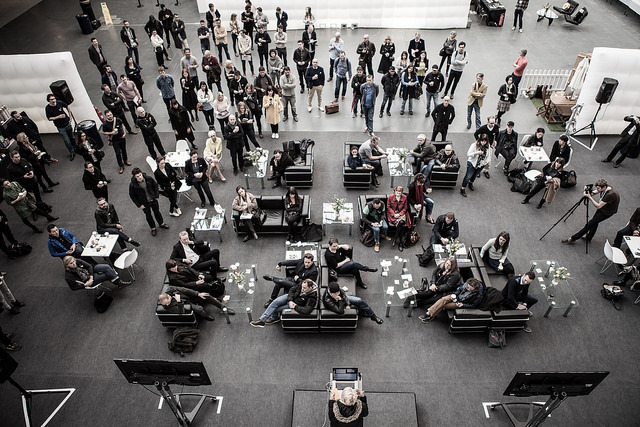
If Cannes is an advertising award achieving unprecedented success as a for-profit venture, its rivals are London's D&AD (founded 1962; the year in parentheses after the award name indicates its founding year) and New York's ONE SHOW (1973), both renowned as non-profit entities pursuing creativity to its absolute limits. Both awards originate from professional creative guilds, leading many creatives to argue their value surpasses Cannes. In a professional world where individuals change jobs seeking higher status and compensation, advertising awards that enhance one's resume hold significant value.
D&AD is notoriously selective in its awards, sometimes even skipping the top prize, the Black Pencil. Over the 50 years from 1963 to 2012, only 112 works received the Black Pencil (and equivalent awards). If Cannes operates like the Olympics, awarding gold, silver, and bronze medals per category, then D&AD and ONE SHOW compete to set new world records. Both awards have managed their brand images accordingly. To understand the high bar D&AD sets, consider the 2007 Jury President's Award. The recipient was Tim Berners-Lee, inventor of the WWW (World Wide Web). "For inventing the WWW and making it freely available, fundamentally changing people's lives and the creativity of industries," explained Tony Davidson, that year's jury president, in the award citation.
The driving force behind both awards is an NPO that uses profits from entry fees and membership dues to nurture the next generation. Top creative members volunteer to conduct seminars and workshops, continuing their contribution to attracting young, talented individuals to the industry.
D&AD also appears to be moving towards greater emphasis on public service, evident in its recent award-winning work. The establishment of the White Pencil, the top prize for public service advertising, in 2013 is a clear manifestation of this. It accelerates the trend of viewing creativity not merely as a highly efficient tool for profit-seeking in a capitalist society, but as a power to build a better society. To be fair, Cannes has also vigorously incorporated programs focused on nurturing the next generation and emphasizing public service advertising. However, a clear boundary exists between whether the entity running the awards is for-profit or non-profit. Why do advertising awards exist? Here, we must return once more to this fundamental question.
Historically, the two cities that have driven global advertising are London and New York. They naturally hold the dominant position on the advertising awards power map. Cannes' parent company is actually based in London. Beyond Cannes, D&AD, and The One Show, other major awards remain active: the London International Awards (1986), originating in London; the ADC (1921: non-profit), originating in New York; the New York Festivals (1957); the Clio Awards (1959); the ANDY Awards (1964: non-profit); and the Cresta Awards (1993). The secretariats running each award continually devise creative strategies, big and small, to differentiate their awards. For example, Cresta maintains its support through innovations like: ① Having 100 creative directors in 10 global cities conduct preliminary judging each year; ② Maintaining consistent award standards by having a fixed panel for final judging; ③ Switching to online judging only to counter attempts to skew results favoring their own networks.
Conversely, awards like the IBA, once a major player among the three major advertising awards, can vanish without a trace. This situation is no different from the brand wars erupting across all industries.
Comparing Asian Advertising Awards
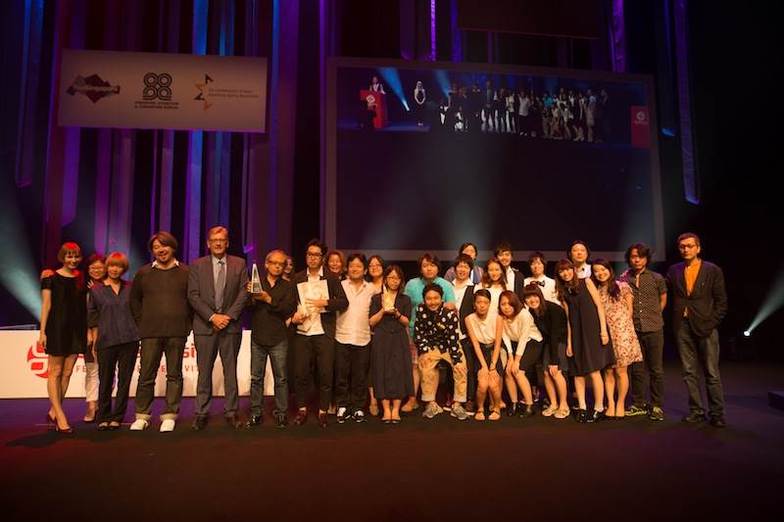
Let's turn our attention to the advertising awards in Asia, of which Japan is a part. The two major regional advertising awards are Thailand's AdFest (1998: including the Pacific and Middle East), which spun off from the AFAA Creative Committee, and Singapore's Spikes Asia, founded by Hong Kong Media Magazine and acquired by Cannes in 2009. AdFest is run by an NPO, with profits used for nurturing the next generation. Numerous faculty and students volunteer to assist with venue setup and judging operations. Meanwhile, Spikes has fully leveraged the Cannes network, annually strengthening its seminars and workshops—the two pillars of advertising festivals alongside the awards themselves.
Entry fees are lower than Cannes, and their reputations are nearly equal, leading many advertising and production agencies to submit their strongest entries to both awards. The judging panels, composed primarily of top-tier creative directors, also see little change between the two awards despite annual rotations. Consequently, the judging results tend to be very similar, with little variation.
This phenomenon isn't unique to Asian advertising awards. In recent years, a trend has become pronounced where a handful of top-tier works—perhaps ten at most—sweep the top prizes, including Grand Prix, at advertising awards worldwide. This inevitably leads to questions: "Aren't the results of all advertising awards becoming increasingly similar?" and "Isn't the sheer number of advertising awards excessive?"
Amid this crowded brand landscape, some entrepreneurs are launching new awards previously absent from the market. One such challenger in Asia is Korea's AdStars (2008). Fully backed by Busan City and the Korean government, it receives substantial support from major Korean corporations like Samsung, LG, and Hyundai. Submissions are accepted online 365 days a year, with no entry fee. The two Grand Prix winners each receive a prize of US$10,000. Judging solely by total entries, it already surpassed 12,000 works in 2013, making it Asia's largest (with submissions from 59 countries and regions, including non-Asian ones). The challenge for AdStars is how much it can elevate its brand value as an advertising award and whether it can become a threat to the established AdFest and Spikes.
The CUP: Challenging the Status Quo from the Region
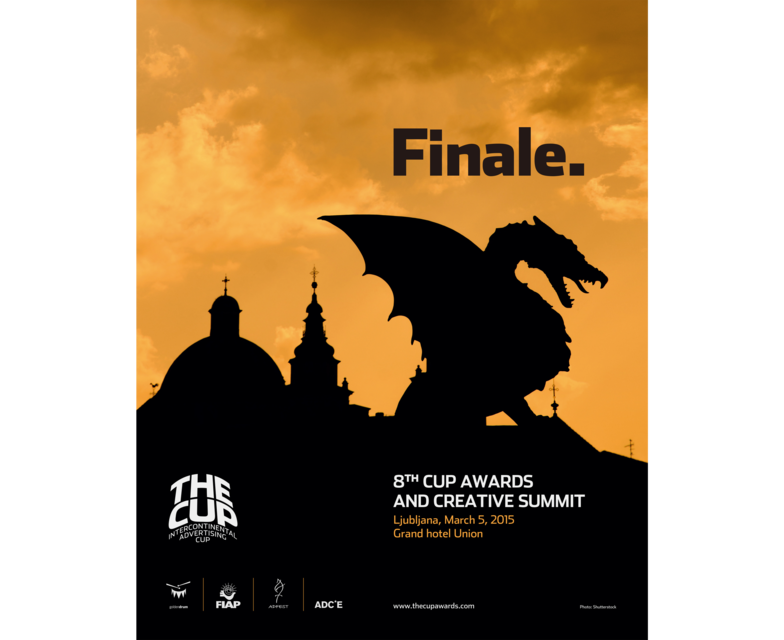
Some advertising awards have realized the idea of coexisting with Cannes, not competing head-on, but rather complementing its gaps. The CUP (Intercontinental Advertising Cup) (2007) is one such example. Fundamentally, advertising is an activity rooted in each specific locality, influencing people and connecting them. "Advertising only creates value when loved by Genius Loci, the spirits said to inhabit a place in Roman mythology." This is the vision presented by The CUP.
Specifically, it limits eligibility to works that have achieved at least shortlist status in the world's four major regional international advertising awards: Eastern Europe's Golden Drum (1997), Asia-Pacific's AdFest (1998: mentioned above), South America's FIAP (2000), and Western Europe's ADC*E ( 1990 ).
The CUP's defining feature lies in re-evaluating and honoring regionally valuable creativity from an international perspective. Its choice of festival locations—Istanbul (Turkey), Ljubljana (Slovenia)—and its attempt to distinguish itself geopolitically from other advertising awards is intriguing. The award was conceived by another heavyweight who knew Cannes' strengths and weaknesses intimately: Michael Conrad. He served as Vice Chairman of Leo Burnett Worldwide and former Global Chief Creative Officer. He currently serves as Dean of the Berlin School of Creative Leadership, an Executive MBA program founded in 2006. He is a figure who has long commanded respect as an industry leader.
Surveying the global advertising awards landscape reveals Cannes, London, and New York as the multipolar centers. In Asia, Pattaya (Thailand), Singapore, and Busan (South Korea) stand alongside them, making it starkly clear that an international advertising award originating from Tokyo still does not exist. The Japan-based international award that truly stands out is the Japan Media Arts Festival (established in 1998). It collaborates with 19 global digital art festivals, including Ars Electronica (discussed next). Advertising constitutes a significantly lower proportion of its awards, with the pillars being four categories: Art, Entertainment, Animation, and Manga. In 2014, it received 3,853 entries from 71 countries and regions.
Which award reigns supreme in the innovation field?
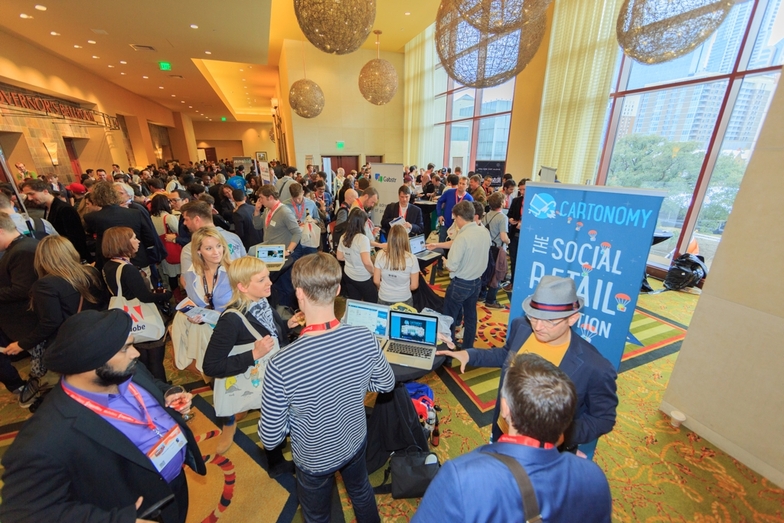
Cannes has ventured into the innovation space aiming for its next evolution. However, powerful rivals already exist in this world. For example, there's Austria's Ars Electronica (mentioned earlier) in Linz, which champions the vision of "technology, art, society." Founded as a festival in 1978, it has honored works fusing art and technology since 1987. Its winning entries are so advanced that experts note they provide inspiration for digital campaign development in the advertising industry.
The Webby Awards (1996), originating in New York, began by honoring websites and now cover the mobile domain. Its list of major winners includes social phenomena like Wikipedia (2004), Twitter (2010), Pinterest (2013), and Kickstarter (2014). The names of celebrity judges, such as David Bowie (musician) and Arianna Huffington (President of The Huffington Post), also draw attention.
Pursuing innovation to its ultimate conclusion leads to the towering presence of the Nobel Prize (1901). The "invention of the blue LED," for which three Japanese professors—Isamu Akasaki, Hiroshi Amano, and Shuji Nakamura—received the Physics Prize in 2014, is an innovation example whose achievements are easily understood even by laypeople like us. The award citation stated it was "a new light that illuminates the world." In the realm of innovation, it's possible that the value of the award itself becomes subject to scrutiny – which prize represents the ultimate honor for an inventor. In this world, Cannes is a relative newcomer, having only established its Innovation category in 2013.
Meanwhile, SXSW (South by Southwest), founded in Austin, Texas in 1987 as a music festival, made a full-scale entry into the interactive field in 1994. Its brand value as an award has been steadily increasing year by year, which is also noteworthy.
The reality that the evolution of digital technology is breaking down the boundaries that have divided various fields and accelerating their reorganization holds true even in the world of advertising awards. Which awards will evolve and survive? Which will reach their expiration date and vanish from the stage?
I surveyed the world's advertising awards and created a bird's-eye view virtual map. Centered on Cannes, which appears to dominate, I explored why other awards persist, why they retain value. I hope international advertising awards continue to function healthily—as catalysts for industry development, societal contribution, and above all, as motivators for individual and team ambition. To achieve this, we must not ignore the current limitations and flaws of advertising awards. To preserve the underground stream of creativity and prevent it from drying up, advertising awards can still do much, now and in the future. I would be delighted if this article proves even slightly useful to readers in that endeavor. This is a bold attempt to sketch a map of a vast territory in one breath, so the author may have some misunderstandings or preconceptions. If the editorial team points these out, we will incorporate them when opportunities for updates arise. It should be noted that all opinions expressed in this article are solely those of the author and do not represent the official views of Dentsu Inc.
Can Advertising Awards Contribute to Sales?
"Advertising awards only have value if they can persuade clients who insist, 'Winning awards means nothing to us. Our company focuses on sales.'" Michael Conrad (previously cited) and Donald Gunn (founder of the Gunn Report) conducted a seminar titled "Do Award-winning Commercials Sell?" at Cannes from 1992 to 1995, utilizing data from 186 advertising agencies worldwide. They proved a significant correlation exists between award-winning work and the sales of products and services. It is no coincidence that since then, the value of advertising awards that place data-driven effectiveness and efficiency at the core of their evaluation has risen. Leading examples include the Effie Awards (1968), the AME Awards (1994: New York Festival Group), and the AMES Awards (2011: Cannes Lions Group). All extensively employ advertisers' CMOs (Chief Marketing Officers) as judges.
Experience the light and shadow of international judging through film
To understand the atmosphere and background of Cannes judging, watch the 2013 film "Judge!" (Director: Satoshi Nagai). The screenplay was written by Yoshimitsu Sawamoto, an active executive creative director at an advertising agency who has served twice as a Cannes juror. The film wraps the light and shadow of judging the fictional "Santa Monica International Advertising Awards" in a unique humor. Its realism is so spot-on that jurors from various countries found it hilariously accurate. The positive feeling after watching, suggesting a bright future for advertising creativity, is deeply satisfying.
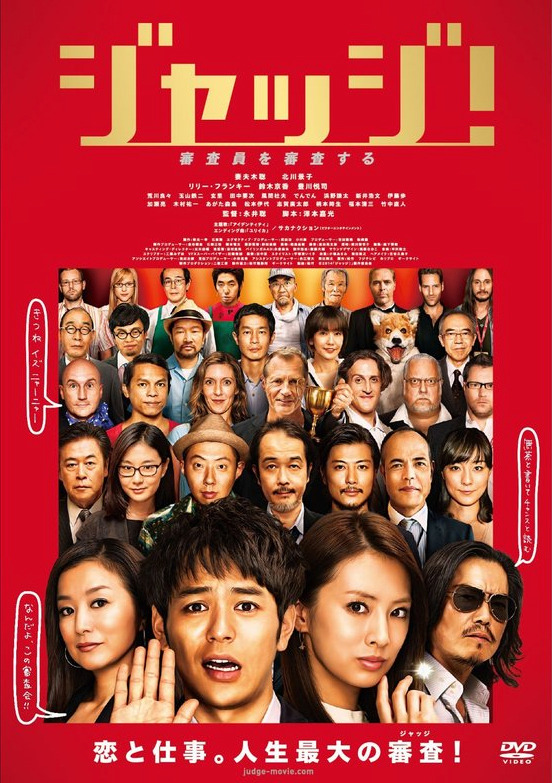
Was this article helpful?
Newsletter registration is here
We select and publish important news every day
For inquiries about this article
Author

Yukio Nakayama
Dentsu Inc.
Global Business Center
Creative Advisor
Graduated from the Department of Biophysics, Faculty of Science, Kyoto University. Earned an MBA from the Berlin School of Creative Leadership (first cohort President). Served as a judge at the Cannes Festival of Creativity, Clio Awards, AdFest (Promo & Direct Jury President), Spikes Asia, AdStars, The CUP, Cresta Awards, New York Festivals, and London International Awards. Won 12 Grand Prix awards at domestic and international advertising competitions (TV and radio commercials). Co-authored and published three books on advertising creativity with colleagues at Dentsu Inc. When not working, enjoys a relaxed and happy life with his wife—Japan's top radio commercial writer/director—and two cats rescued from the Fukushima disaster zone.
